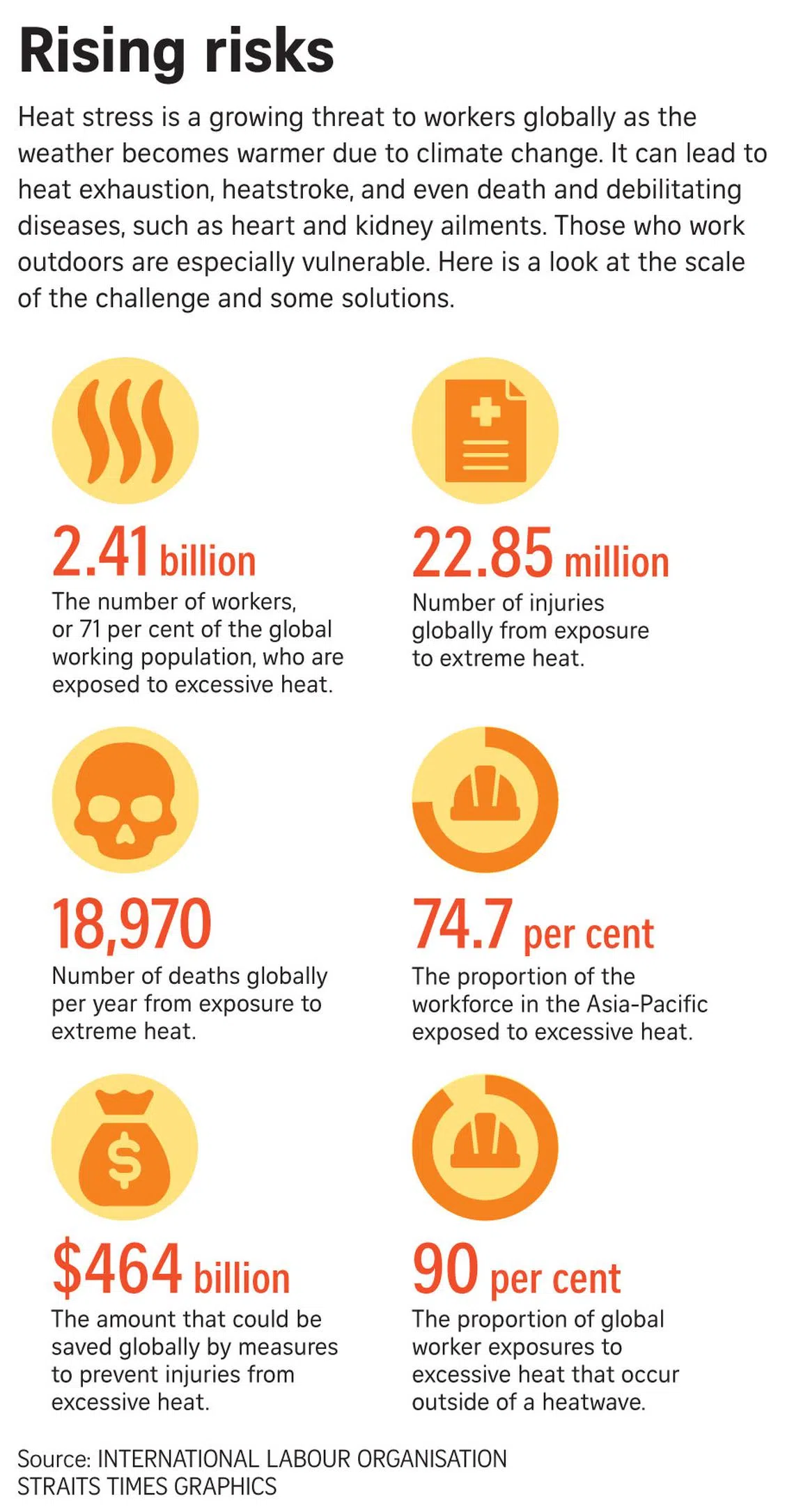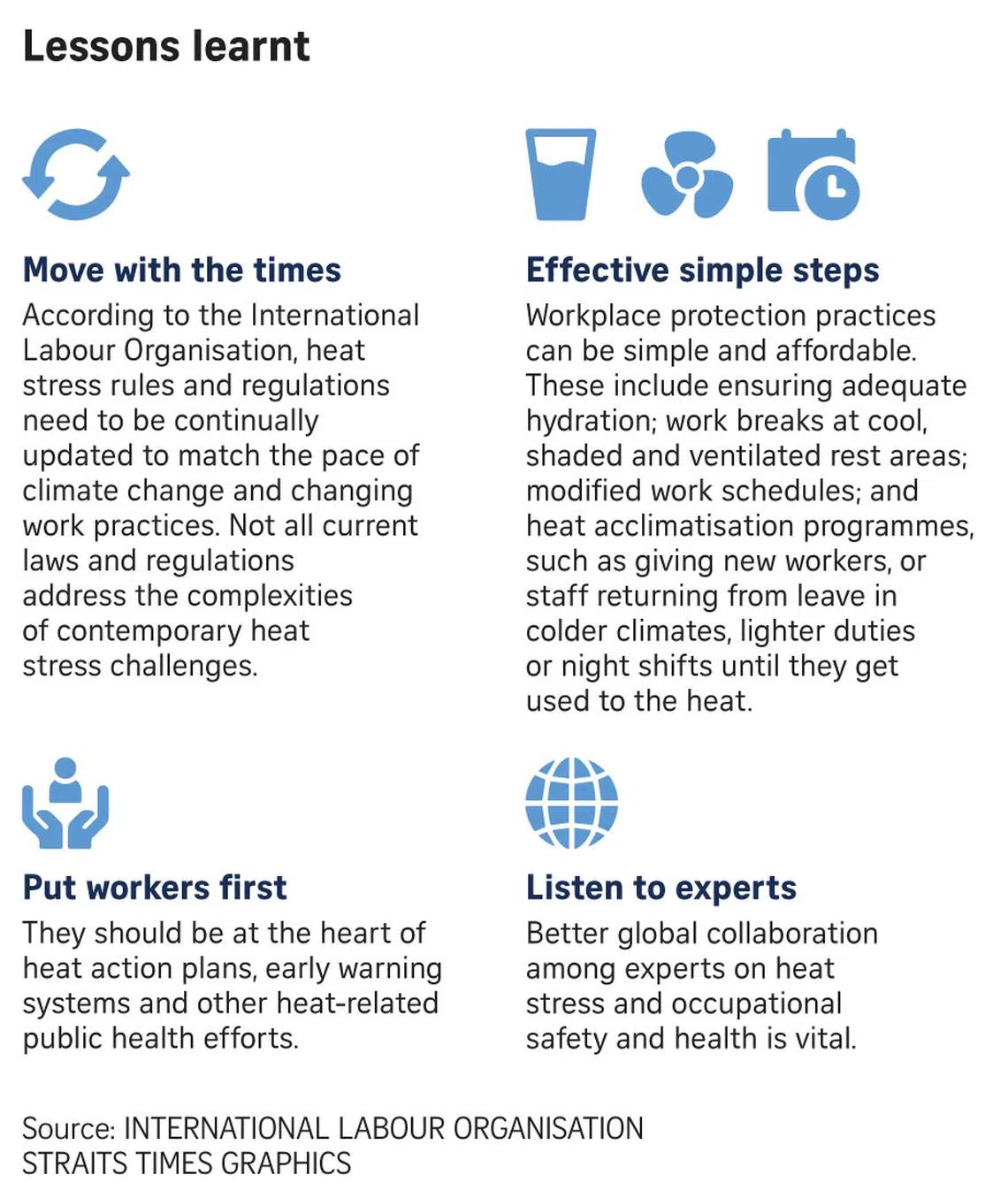The dangers of heat stress: A sudden strike or a slow burn
Sign up now: Get ST's newsletters delivered to your inbox

Exposure to excessive heat triggers sweating as the body tries to cool itself.
ST PHOTO: KELVIN CHNG
Follow topic:
SINGAPORE – Heat is a silent killer – it can strike quickly by causing heatstroke when the mercury soars, or it can kill after years of repeated exposure to extreme temperatures that cause serious heart, lung and kidney problems. The key is recognising the signs of heat stress.
The human body is designed to maintain a steady temperature. Exposure to excessive heat triggers sweating as the body tries to cool itself.
But this can lead to rapid loss of water and electrolytes, especially during heavy exertion while at work or exercising. And when humidity is high, it is harder for the sweat to evaporate quickly, causing the body to heat up further. All this risks fatigue, headaches and dehydration,
Prolonged exposure to excessive heat can lead to muscle spasms, heat rash and loss of concentration, increasing the risk of accidents.
In the most serious cases, this can lead to heatstroke, when the body can no longer control its core temperature, which can spike to 40 deg C or higher. Symptoms include confusion, delirium and slurred speech. Unless the person is cooled down, multiple organ failure can set in, leading to death.
People with prolonged and repeated exposure to heat stress – such as farmers, port workers or those who work in construction – can get kidney and heart damage because of repeated incidents of severe dehydration putting strain on their organs.
Seniors and children are most at risk of heat stress because their bodies cannot withstand excessive heat so well. Some medications for seniors also reduce their body’s ability to regulate temperature.




